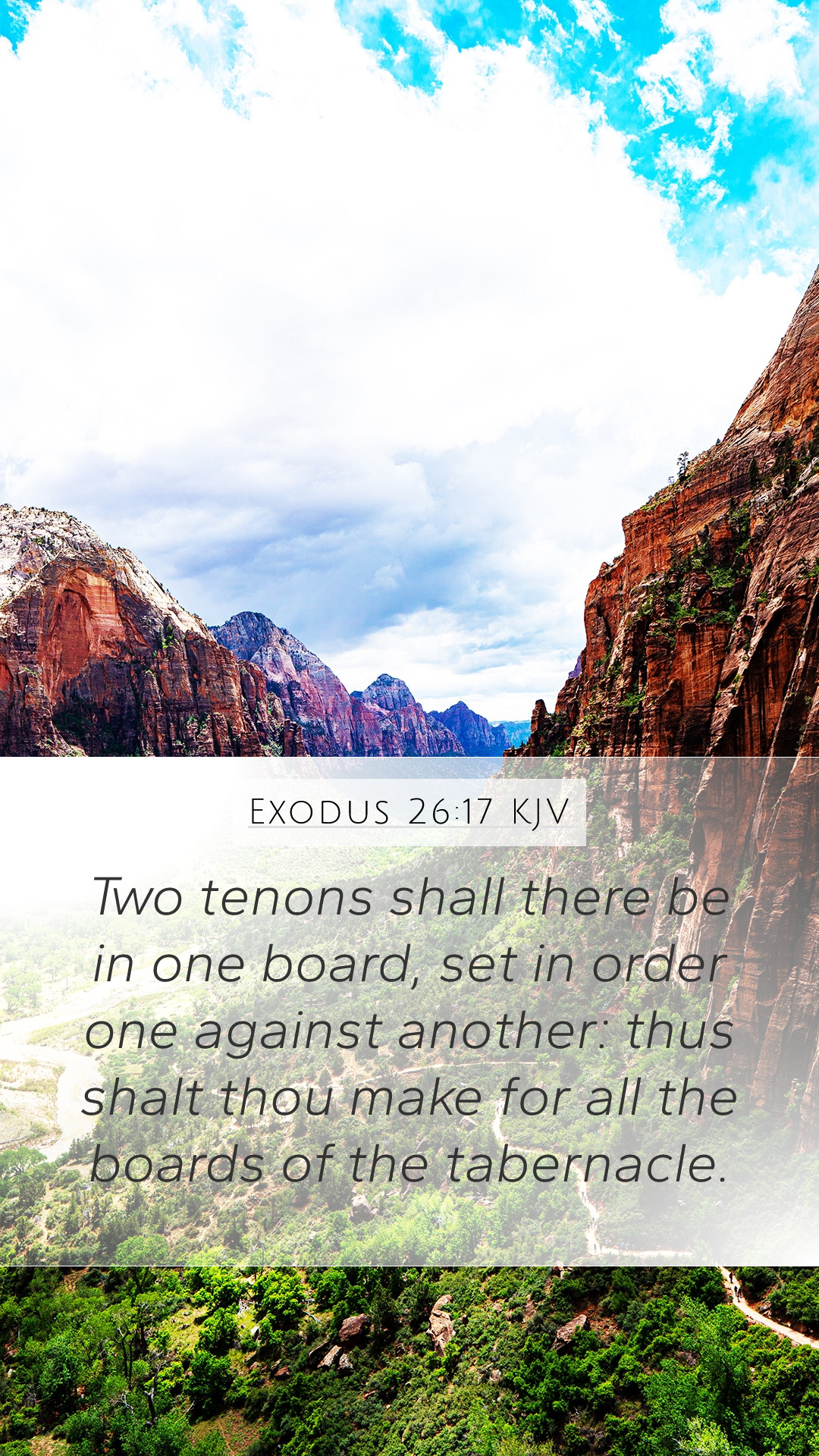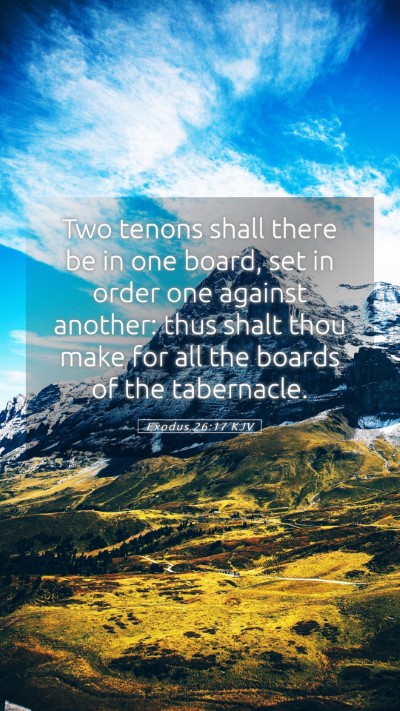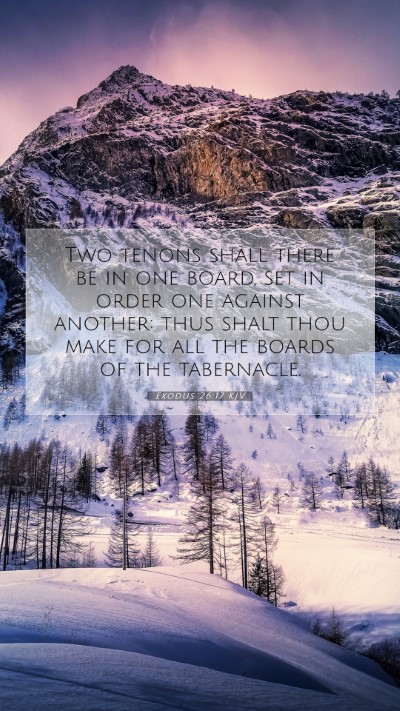Bible Verse Meaning: Exodus 26:17
Understanding Exodus 26:17: Exodus 26:17 is a verse within the context of the construction details of the Tabernacle given to Moses by God. This specific verse focuses on the technical aspects of the structure, particularly the number of pillars that would hold the curtains of the Tabernacle. It states, “Twenty pillars shall be for the curtains.” This command emphasizes the importance of order and organization in the worship of God, which can be understood through a combination of public domain commentaries.
Bible Verse Interpretations
-
Matthew Henry's Commentary:
Henry emphasizes that the Tabernacle serves as a physical representation of God's presence among His people. Each component, including the number of pillars mentioned in Exodus 26:17, not only contributes to the structural integrity of the Tabernacle but also serves a symbolic purpose. The pillars could represent the ministries or functions that uphold the worship life of the Israelites. They illustrate how various elements work together to uphold a sacred space, mirroring the spiritual support provided by God.
-
Albert Barnes' Notes:
Barnes elaborates on the significance of the number twenty in this context. He suggests that numerology in Scripture often has meaning—here, the twenty pillars may represent a completeness in the structure necessary to support the overarching purpose of the Tabernacle, which is a dwelling place for God. This detailed instruction showcases God’s intentionality in how He desires to be approached in worship.
-
Adam Clarke's Commentary:
Clarke notes that the act of erecting the Tabernacle illustrates the importance of community and unity in worship. The pillars, working in conjunction, create a unified structure. This resonates with the notion that every believer has a role to play in contributing to the overall body of Christ, much like the pillars form the framework for the Tabernacle. Additionally, Clarke points out that the careful measurements and specifications relay God's desire for holiness and reverence in worship spaces.
Key Themes and Insights
The analysis of Exodus 26:17 can be synthesized around several significant themes:
- God's Order in Worship: The meticulous instructions highlight the care God takes in establishing a space for worship, reminding believers of the importance of approaching God with reverence and proper arrangement.
- Symbolism of the Pillars: The pillars can be interpreted symbolically; they may represent not just physical support but foundational truths or doctrines that upholds faith communities today.
- Community Aspect: Just as the pillars collectively support the Tabernacle, believers are called to support one another within the Church, working together in harmony for the sake of worship and ministry.
- Historical and Cultural Context: The construction of the Tabernacle reflects the ancient practices of nomadic worship and points toward the eventual establishment of the Temple in Jerusalem, making this verse a crucial part of the historical tapestry of Israelite worship.
Bible Study Insights
For those involved in Bible study groups or online Bible study, understanding this verse can deepen the insight into how order and intentionality play crucial roles in worship. It can serve as an enriching exploration topic about God's detailed plans for His people.
Bible Verse Commentary and Exegesis
This verse provides not only a practical aspect of the Tabernacle's structure but serves as rich material for Bible study lessons or Bible study resources. It teaches that every element within worship is significant and should be approached thoughtfully.
Cross References
- Exodus 25:9 - God's specific instructions for the construction of the Tabernacle.
- 1 Chronicles 28:11 - David's plans for the Temple illustrating the continuation of God's dwelling among His people.
- Hebrews 8:5 - A reference to the Tabernacle's shadow of heavenly realities and the order God establishes in worship.
Final Thoughts
As you reflect on Exodus 26:17, consider how the structure and order of the Tabernacle mirror our own lives. In this passage, we find layers of meaning that connect worship, community, and God's presence among His people. For anyone seeking explanations of Bible verses, this verse exemplifies the beauty of how even seemingly mundane details in Scripture carry profound theological implications.


